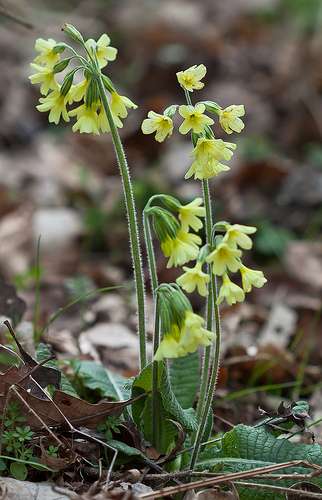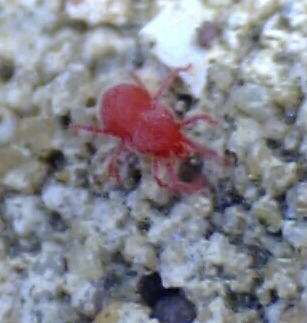Interactions:
In the food chain, Primula obconica is known as a producer because it produces its own food. Being a producer puts this plant at the bottom of the food chain along with all other plants and autotrophic organisms. Since it is at the bottom of the food chain, herbivores and omnivores tend to feed on it.
PLANTS:
Primula obconica has a positive relationship with mosses. The
Poisonous Primrose benefits by growing on mosses because the moss
increases basal area and flower production. The moss also is found
to help vascular plants because it raises the amount of accessible
soil moisture for the
 plant. The moss does not benefit by this
relationship directly, but both the moss and Poisonous Primrose
assist the soil's nutrient level. When these two organisms are
living together, there is found to be a large amount of organic
material in the soil along with an increase in magnesium
concentrations. The soil also has a lower calcium to magnesium
ratio (Rayburn, Davidson, and White, 2012).
plant. The moss does not benefit by this
relationship directly, but both the moss and Poisonous Primrose
assist the soil's nutrient level. When these two organisms are
living together, there is found to be a large amount of organic
material in the soil along with an increase in magnesium
concentrations. The soil also has a lower calcium to magnesium
ratio (Rayburn, Davidson, and White, 2012).
Even though the Poisonous Primrose can have positive interactions with plants, that is not the case in all situations. In both gardens and in nature, P. obconcia has to compete with other plants for sunlight, space, and nutrients.
FUNGUS:
As stated on Food I Eat page, Primula obconica has a relationship with a mycorrhizal fungus. In this relationship, both organisms benefit. The fungus is attached to the roots of the plant. The plant gets nutrients from the mycorrhizal fungus, and in return, the mycrorrhizae gets sugars from the plant that is undergoing photosynthesis.
HUMANS AND OTHER ANIMALS:
 As
given from the name, the Poisonous Primrose has poison that is
harmful to both humans and other animals. In most cases, humans are the
ones that suffer from coming in contact with this plant. However, if
an animal is too close to the leaves of
As
given from the name, the Poisonous Primrose has poison that is
harmful to both humans and other animals. In most cases, humans are the
ones that suffer from coming in contact with this plant. However, if
an animal is too close to the leaves of
P. obconica, it may
also suffer the side affects. Information about this poison, the
affects, and treatment are found on the watch
out page.
Besides having a mutualistic relationship with bees, the Poisonous Primrose is found to have negative interactions with pests. This plant is subject for attack by many pests; most commonly, slugs and snails. However, spider mites and aphids are also found to attack this primrose plant.
Molluscs:
-Snails: Cornu aspersum
commonly known as the brown garden snail has given gardeners trouble for years. This
species of snail attacks plants that grow near the ground and eats
away at the leaves of the plant. A sign that a snail has feed on Primula obconica is
irregular holes in the leaves. Snails may also feed on plants that produce fruits;
an artichoke is another plant that might be attacked. To
learn more about artichokes, visit the page about
Cynara scolymus (Globe Artichoke).
-Slugs: A legless, boneless creature that
tends to eat away at the surface of plants leaves. This attack on the plant leaves
holes in the leaves. Also, slugs tend to leave a trail of slime which attracts other snails to that
location.
** Slugs and snails can be treated by nontoxic slug bait placed around the garden.
Arthropods:
-Spider Mites: Spider mites are a common
pest in gardens. They tend to feed on vines, berries, ornamental plants, and
fruit trees. This organism sucks the cells contents from the leaves. A sign of this damage
includes light dots on the leaves. As the damage gets worse, the leaves start to turn a yellow
color.
-Aphids: These small, soft-bodied insects
suck out the plant's fluid. This can cause distortion
of the leaves and stunt the growth of the shoot. They produce
a sticky substance known as
honeydew that can grow with a sooty mold fungus. This species
can also negatively affect the
plant because it can transport toxins or viruses into the
plant.
**Spider mites and aphids can be treated by spraying the plant with soapy water.
![]()
As stated above, check out how Primula obconica can affect
humans.
Watch Out!
Back to the home page.



